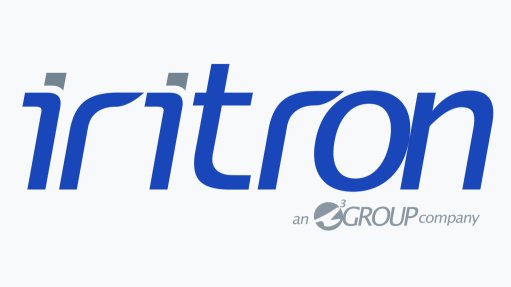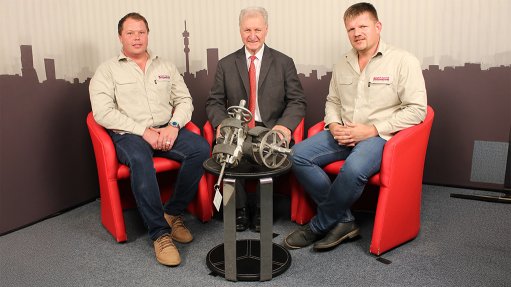Early days for stainless steel in cladding, construction industry


INTO FOCUS Stainless steel in cladding construction brings the advantages into focus
The South African stainless steel industry is in an early developmental stage with regards to construction and cladding, despite many architectural projects having been completed over the past few decades, says South African Stainless Steel Development Association (Sassda) Western Cape regional manager Michel Basson.
This early stage, he adds, provides an opportunity for the local stainless steel industry to grow rapidly over the next decade, considering that stainless steel – while slightly more expensive – has the unique ability to resist corrosion, heat and chemical damage, thereby providing a total life-cycle costing that is, in most cases, “unbeatable”.
Basson explains that albeit that most stainless steel grades can be used for architectural application, high-strength duplex grades of stainless steel provide added strength, which allows for a reduced thickness of the material, subsequently providing a cost advantage over conventional grades of steel since the construction will be lighter with an extremely long service life.
“. . . the more alloyed the material, the higher the cost. With stainless steel, a balance can be achieved between cost-effectiveness and functional ability. It is the role of Sassda to assist in this balancing act to provide a sufficient life span at optimum cost.”
Basson also highlights the “definitive advantages” when façades, which are constructed using cladding, act as a sunscreen by decreasing building temperatures. When installed correctly, this reduces electricity use and adds to the green status of buildings.
“Stainless steel contributes greatly to building safety in terms of high-temperature strength and seismic stability. The life-cycle cost remains a winner and stainless steel is stronger, meaning that thinner and lighter gauges can be used.”
For this reason, Sassda launched its Lifecycle Costing app, in 2016, which calculates the long-term cost benefits of stainless steel and allows for accurate material cost comparisons over the entire life cycle of a project.
Using stainless steel in cladding construction brings the advantages in terms of temperature control and environmental issues into focus, says Basson.
However, the impact of stainless steel is yet to make a big impact in South Africa, mostly because of the misinterpretation of initial costs, he laments.
While the initial costs involved in using stainless steel might have acted as a deterrent in the past, this hurdle is being overcome using proper life-cycle costing analysis, declares Basson, adding that a lack of knowledge regarding the design, installation and general advantages have also contributed to the lack of stainless steel use in the industry.
However, in conversation with Engineering News, Basson points out that South Africa offers “massive potential” for the use of stainless steel in construction projects, especially in coastal areas, which rate as one of the world’s hot spots in terms of corrosion.
In terms of alternative construction methods and materials, Basson suggests that industry players, even architects, consider the energy efficiency, total life-cycle cost and the environmental-impact advantages that stainless steel offers.
“Advantages include a positive impact of air quality, general hygiene, the collection and reuse of water, as well as the impact on electricity use through the use of cladding as a heat shield, which is a beneficial spin-off from the architectural application of stainless steel,” he elaborates.
Additionally, Basson suggests the use of locally fabricated components for the architectural industry as an alternative option for builders’ hardware.
He highlights that this hardware includes a corrugated stainless steel tube for use in plumbing. The flexibility of the tube makes the installation of bends and elbows obsolete, thereby reducing installation time.
“The major relevance to our industry is that the tube offers less opportunity for leakage of water, which is a scarce resource. The reduction of fittings reduces the potential of leaking. The tube does not leach into the water supply, making it safe and hygienic,” Basson enthuses.
South Africa Lagging
While it is difficult to compare South Africa to the rest of the world, Basson elaborates that, while the country may be lagging in terms of technology use in the industry, it holds huge potential.
Growing the market will, however, depend on how associations, such as Sassda, and the industry can work on awareness training, technical assistance and research, as well as marketing.
“To this end, [Sassda] does regular training sessions at architectural schools, holds workshops for architects and assists with technical issues. We have also embarked with our members on researching and rolling out roofing sheets that are becoming available to the general market,” he says.
In addition to a lack of skills development and training in the industry, Basson stresses that most of the current issues are born “out of ignorance and a lack of information”, but that most of these issues can be resolved through proper design, material selection and maintenance.
Statutory and regulatory issues are also prevalent in the steel industry, he adds.
“To use stainless steel in the construction industry, certain standards need to be modified or added to include its use . . . This is a problem area and, unfortunately, not all in the control of industry hands.”
Basson adds that Sassda and industry members are addressing these bureaucratic issues at the correct level and remain hopeful of a positive outcome in the near future.
Article Enquiry
Email Article
Save Article
Feedback
To advertise email advertising@creamermedia.co.za or click here
Comments
Press Office
Announcements
What's On
Subscribe to improve your user experience...
Option 1 (equivalent of R125 a month):
Receive a weekly copy of Creamer Media's Engineering News & Mining Weekly magazine
(print copy for those in South Africa and e-magazine for those outside of South Africa)
Receive daily email newsletters
Access to full search results
Access archive of magazine back copies
Access to Projects in Progress
Access to ONE Research Report of your choice in PDF format
Option 2 (equivalent of R375 a month):
All benefits from Option 1
PLUS
Access to Creamer Media's Research Channel Africa for ALL Research Reports, in PDF format, on various industrial and mining sectors
including Electricity; Water; Energy Transition; Hydrogen; Roads, Rail and Ports; Coal; Gold; Platinum; Battery Metals; etc.
Already a subscriber?
Forgotten your password?
Receive weekly copy of Creamer Media's Engineering News & Mining Weekly magazine (print copy for those in South Africa and e-magazine for those outside of South Africa)
➕
Recieve daily email newsletters
➕
Access to full search results
➕
Access archive of magazine back copies
➕
Access to Projects in Progress
➕
Access to ONE Research Report of your choice in PDF format
RESEARCH CHANNEL AFRICA
R4500 (equivalent of R375 a month)
SUBSCRIBEAll benefits from Option 1
➕
Access to Creamer Media's Research Channel Africa for ALL Research Reports on various industrial and mining sectors, in PDF format, including on:
Electricity
➕
Water
➕
Energy Transition
➕
Hydrogen
➕
Roads, Rail and Ports
➕
Coal
➕
Gold
➕
Platinum
➕
Battery Metals
➕
etc.
Receive all benefits from Option 1 or Option 2 delivered to numerous people at your company
➕
Multiple User names and Passwords for simultaneous log-ins
➕
Intranet integration access to all in your organisation



















